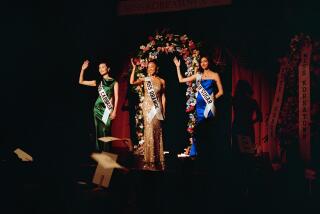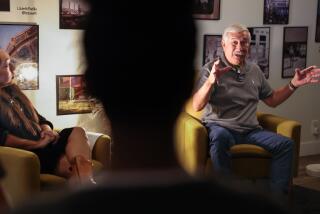Southern Writers’ Photographs : A WORLD UNSUSPECTED Portraits of Southern Childhood<i> edited by Alex HarrisUniversity of North Carolina Press: $16.95; 237 pp.) </i>
- Share via
No doubt people have died trying to rescue old family photographs from a burning house. For a generation born after 1940, in which photography is virtually synonymous with reality, nothing links us to our past quite like photographs. A casual snapshot of one’s childhood self at a grandfather’s knee can be both mystery and clue, indelibly engraved in our imagination.
In conceiving this book, Atlanta native Alex Harris, a photographer based at the Center for Documentary Photography at Duke, hit upon an intriguing, if risky, idea. A new generation of Southern writers had come of age under the incalculable influence of photography. Harris engaged 11 of these writers to ponder old family photographs and, “using these snapshots as a catalyst for memory, to tell the true story of their childhoods.” Juxtaposing snapshots and text, the book would probe “the mystery of memory,” at the same time documenting stories that “might come to represent the experience of a whole generation growing up in the South.”
The results are uneven. Harris has assembled a representative sampling of younger Southern writers, among them Josephine Humphreys, Bobbie Ann Mason, Barry Hannah and T. R. Pearson, as well as such distinguished black writers as James Alan McPherson and Al Young. But some of these writers succumb to various forms of self-indulgence. Pearson, for example, writes in precisely the same voice as the teen-age narrator of his novels in remembering his boyhood vacations on the North Carolina coast. Others evade the truth, perhaps saving their best childhood material for fiction. “The best thing about childhood,” claims Hannah, “was that I never worried about anything--nothing.”
At its best, though, “A World Unsuspected” comes close to reaching Harris’ aspirations. Examining photographs of herself and her grandmother, Humphreys writes a grave and stunning remembrance of her grandmother’s effect on her childhood in Charleston, S.C. With rare candor, Mason renders a hilarious account of her teen-age infatuation with the musical group “The Hilltoppers.”
For those unacquainted with these writers, this book will have the additional reward of whetting the appetite to read their work. Despite the disappointments, it may well be the best introduction we have to a new generation of Southern writers.
More to Read
Sign up for our Book Club newsletter
Get the latest news, events and more from the Los Angeles Times Book Club, and help us get L.A. reading and talking.
You may occasionally receive promotional content from the Los Angeles Times.






